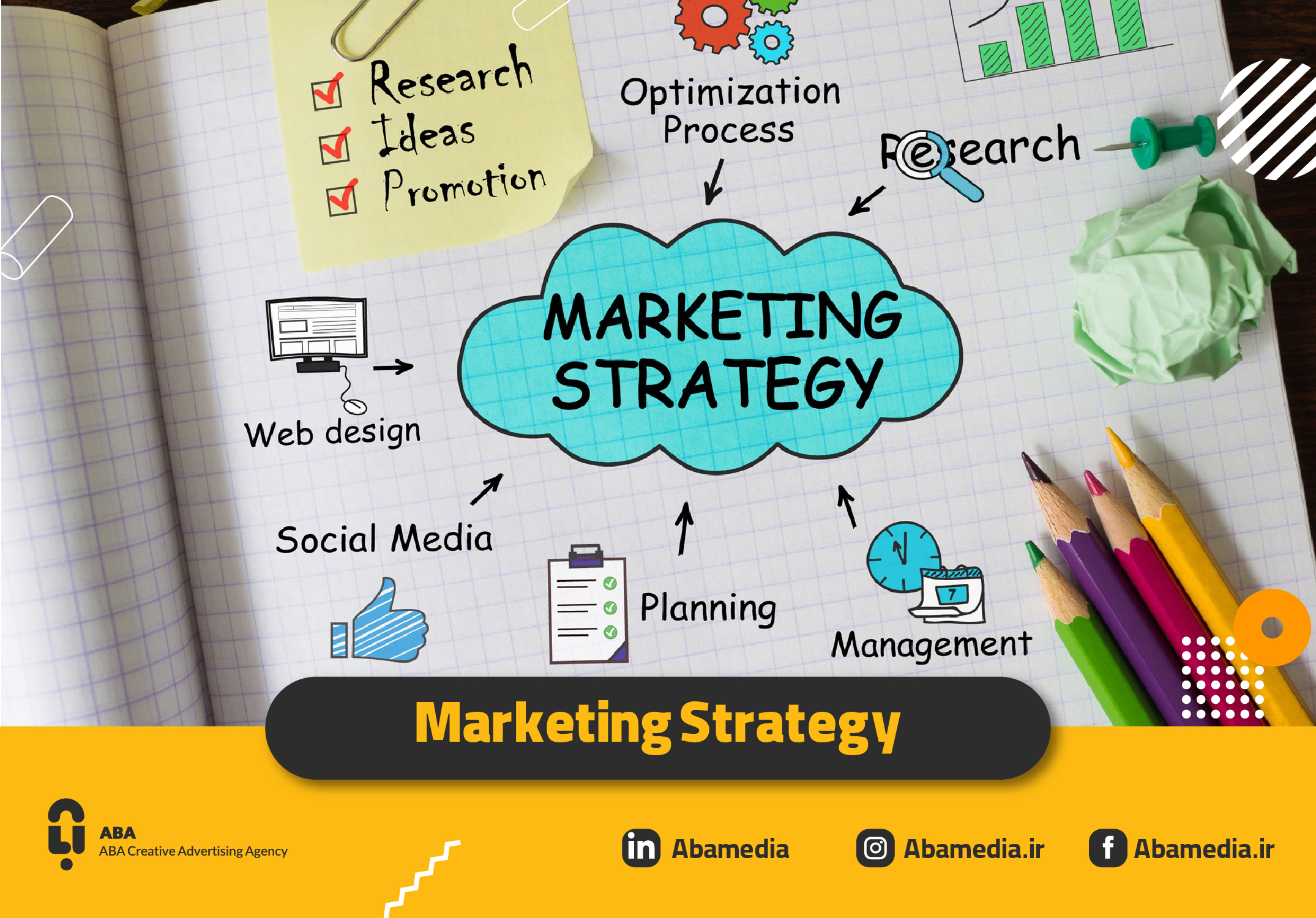What is a Marketing Strategy?
In any process, you need a strategy to accomplish tasks and achieve your goals efficiently, considering all aspects and minimizing time. In sales and marketing, you also require a strong strategy. Essentially, a marketing strategy involves designing a method to achieve your marketing goals, which outlines how to focus on your product, target market, and the necessary costs.
In a previous article, we discussed the characteristics of a good advertising agency and mentioned that each agency specializes in a specific field. In this article, we will provide detailed explanations about marketing and marketing strategies. Before developing a marketing strategy, you need to understand the different types of marketing to tailor a specific strategy for each.
Types of Marketing Strategies:
If you want to choose a strategy for your business, you can either design a new strategy or use existing ones. To create a successful strategy, consider the following:
- Define Your Target Market and Audience:
Identifying your target market is one of the most essential steps in designing a strategy. Once you’ve defined and evaluated your target audience, you can base your goals on their behavior. - Test Your Audience Hypothetically Before Implementation:
Conducting a hypothetical test of how your audience reacts to your offerings can help you avoid potential losses. - Leverage Existing Strategies:
By studying and researching the strategies of various companies, you can anticipate potential mistakes and challenges and devise appropriate solutions. - Evaluate Your Strategy After Implementation:
Evaluating a strategy can significantly enhance its effectiveness. After the first execution, you can identify and reduce errors or even find solutions for them.
Marketing strategies can be broadly categorized into three types:
- B2B (Business-to-Business):Organizational strategy
- B2C (Business-to-Consumer):Consumer strategy
- B2G (Business-to-Government):Government strategy
Let’s explore these strategies in detail.
B2B Marketing Strategy:
The goal of this strategy is to provide services or products from one company to another. This strategy, designed for a broad audience and high connectivity, requires long-term goals, stable audiences, and extended transactions.
The best way to establish these connections is through digital marketing (you can read a comprehensive article about marketing types here), which can include content marketing, email marketing, search engine marketing, and more.
Designing a B2B Strategy:
To create a solid strategy for your organization to connect with another, you need to follow these ten steps:
- Research:
Research is a fundamental pillar in any endeavor. Understanding your customers helps you assess the effectiveness of your strategy and strengthen your company’s performance. Studies show that organizations that conduct research about their audience achieve results ten times faster and generate twice the profit. - Develop a Strategy Based on Your Niche:
A niche is a small, specialized segment of your organization where you excel. Focusing on your niche allows you to operate faster and stand out in your industry. A strong niche, combined with digital marketing and a robust portfolio, can establish your reputation among other organizations. - Emphasize Digital Marketing:
The online world is one of the best ways to build trust with your audience. Using digital marketing tools, you can create strong and lasting connections with your audience. (Read more about digital marketing pillars here.) - Extensive Advertising:
Broad advertising increases your visibility within your target community. By allocating a specific budget for visual advertising, you can embed your brand’s name and work in the minds of your target audience. - Referral Marketing:
Research shows that 81% of customers who didn’t need a service referred the organization to others who did. This referral stems from the trust built through visibility and a strong portfolio. Trust, derived from your expertise or shared information online, connects you to individuals or organizations aligned with your target audience. - Use CRM (Customer Relationship Management):
CRM software organizes and categorizes the information you gather from your audience. In B2B marketing, where your target audience is vast, CRM helps track conversations, needs, and other critical data. - Evaluate and Optimize:
After implementing your strategy, evaluate its performance. This assessment helps identify strengths and weaknesses, allowing you to enhance strengths and address weaknesses, making your strategy more robust and practical. - Document Results:
After each interaction, document the outcomes. Analyzing these results enables you to apply lessons learned to future interactions.
B2C Marketing Strategy:
The concept of B2C (Business-to-Consumer) strategy focuses on delivering services or products directly to the end consumer. The first modern use of this strategy was by Michael Aldrich in 1979, who utilized a primary medium to introduce and sell products to customers.
Creating a B2C Strategy:
To develop a strong B2C strategy, follow these steps:
- Understand Your Consumer’s Perspective:
Determine how your consumer reacts to your products or services. Does it create a sense of need or interest? Understanding this helps you choose the best way to present your offerings. - Produce Valuable Content:
High-quality content that engages your audience builds trust and fosters loyal customers, which is one of the primary goals in marketing. - Build a Customer Database:
A customer database is crucial in marketing as it helps design effective strategies. In B2C, databases are often created through social media. By asking questions, you can understand your audience’s preferences and needs.
Examples of B2C Strategies:
- Selling products or services directly through your website or app.
- Using intermediary platforms like Digikala.
- Building strong connections through social media.
- Investing in visual advertising and in-store sales.
- Hosting engaging competitions to encourage purchases.
- Offering purchase incentives like discounts or gifts.
- Creating a strong customer loyalty program.
- Leveraging influencers to promote your products.
By implementing these strategies, you can effectively navigate the complexities of marketing and achieve your business goals.






